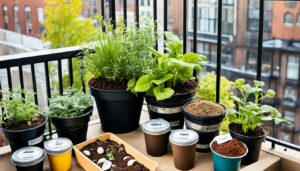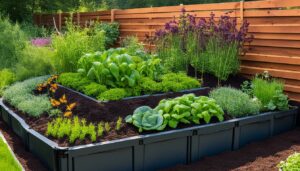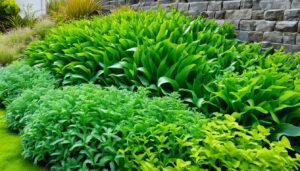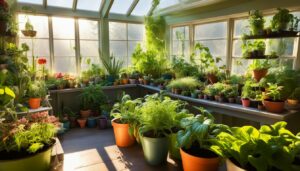There’s a hidden melody in the way nature operates, a kind of green symphony that plays out when leaves rustle, roots anchor, and flowers bloom. It’s in this very symphony that the secret of organic companion planting lies. Imagine, if you will, the silence of an early morning garden, a space that you’ve nurtured, and watch as plants that you’ve chosen with care, flourish side by side—the best plants for companion planting transforming your garden into a tapestry of colors and aromas that speak not just of beauty, but of harmony and health.
This isn’t just a vision; it’s a centuries-old practice backed by the knowing hands of generations of gardeners who’ve seen, quite tangibly, the rewards of pairing plants in friendships that go beneath the soil. It’s these relationships that harness the full garden success you strive for, and with the right companion planting guide, your backyard will not only burgeon with life but will also become a bastion of biodiversity and organic vitality.
Key Takeaways
- Discover the time-tested technique of companion planting to bolster garden success organically.
- Find out which are the best plants for creating symbiotic relationships that enhance garden health.
- Learn how to pair plant partnerships to boost your garden’s yield and protect it naturally.
- Use a well-researched companion planting guide to optimize your gardening strategy.
- Revel in the advantages of incorporating biodiversity and organic practices in your garden ecosystem.
Understanding the Benefits of Companion Planting
The time-honored tradition of companion planting vegetables is more than just a technique—it is a sustainable ethos for your garden. This perceptive strategy melds the use of beneficial plant combinations to deliver a multitude of advantages, from the enhancement of soil nourishment to the natural balancing of the garden’s ecosystem.
Organic companion planting creates a diversified habitat that fosters various plant families, each with their own unique set of needs and benefits. For instance, the deep-root systems of pumpkins intermingled with the shallower roots of broccoli prevent the over-taxation on any single layer of soil nutrients.
Among the blossoming rows, the introduction of nitrogen-fixing legumes conditions the soil for future harvests. This is organic farming at its core, reducing the need for synthetic fertilizers, and ultimately, nurturing a healthier living environment.
Another layer to this intricate gardening tapestry is the strategic use of companion planting herbs. Aromatic favorites like basil and lavender disguise the scents of vegetable crops or repel unwanted insects, performing a dance of deception and deterrence that keeps pests naturally at bay.
Pest management is effectively intertwined with plant selection, using clever botanical relationships to run interference. Welcoming the right insects with plants like nasturtiums and marigolds culminates in a partnership of pollination and pest control.
It is not solely about the partnership of plantings, but also understanding which to separate. For instance, the allelopathic nature of garlic could stifle the growth of peas and beans, therefore, judicious placement is paramount. This knowledge ensures thriving, vibrant plants that coexist without competition, formulating the perfect balance in your organic garden.
| Vegetable | Companion Herbs | Benefits | Avoid Planting With |
|---|---|---|---|
| Tomatoes | Basil, Marigold | Enhances flavor, repels pests | Corn, Potatoes |
| Carrots | Chives, Rosemary | Deters carrot fly | Dill, Parsnip |
| Peas | Mint, Marigold | Improves growth, deters pests | Onions, Garlic |
| Broccoli | Chamomile, Dill | Attracts beneficial insects | Strawberries, Tomatoes |
By weaving together a rich tapestry of companion planting vegetables and herbs, gardeners can yield a bountiful harvest that is both environmentally friendly and abundantly productive. Indeed, the true art of companion planting lies within the delicate weave of biotic relationships, each supporting the other in symbiotic harmony.
Best Plants for Companion Planting
Mastering the art of companion planting can lead to a flourishing and productive garden. By strategically selecting plants that support one another, you can create an ecosystem that not only produces a bountiful harvest but also promotes garden health and pest management. Below are a few star players in the companion planting arena that can enhance your garden’s vitality.
Boost Soil Fertility with Legumes
Legumes in companion planting play a pivotal role in enhancing soil quality. As natural soil fertilizers, legumes such as beans and peas facilitate nitrogen fixation—a process that converts atmospheric nitrogen into a form accessible to plants—contributing significantly to a nutrient-rich environment. The incorporation of leguminous plant residue post-harvest can further amplify nitrogen content, preparing the garden bed for a variety of future plantings. This symbiotic relationship fostered by legumes aligns perfectly with organic gardening strategies, promoting garden biodiversity and sustainability.
Pest Control with Aromatic Herbs and Flowers
The strategic integration of aromatic herbs and flowers within your garden not only adds sensory allure but also serves as a natural pest control mechanism. Basil, when planted next to tomatoes, can repel thrips and hornworms, while onions interplanted with beets have been known to deter aphids. Companion planting flowers like alyssum attract beneficial predatory insects, further enhancing pollination and reducing the need for chemical insecticides. These natural pest management practices are fundamental to crafting an organic garden eco-system.
Trap Crops and Their Role in Your Garden
Trap crops are the unsung heroes of companion planting, offering alternative landing pads for pests away from your main crops. By planting radishes to entice cucumber beetles, or dill to allure tomato hornworms, these trap crops in companion planting serve as a buffer, safeguarding your premium harvests. This tactic of insect management with plants demonstrates an innovative approach to organic pest control, crucial for maintaining an eco-friendly garden habitat.
Below is a concise plant companion chart highlighting effective plant combinations for garden health:
| Companion Plant | Benefits | Compatible Partners |
|---|---|---|
| Beans | Nitrogen Fixation, Soil Fertility | Cucumbers, Spinach, Eggplants |
| Basil | Repels Pests, Enhances Flavor | Tomatoes, Peppers |
| Marigolds | Deters Nematodes, Attracts Pollinators | Tomatoes, Squash, Lettuce |
| Dill | Attracts Beneficial Insects, Trap Crop | Cabbages, Onions |
| Alyssum | Attracts Predatory Insects, Ornamental | Brassicas, Beets |
Embracing plant combinations for garden health not only yields a garden that’s a visual delight but also one that’s robust and self-sustaining. By applying the principles of companion planting—utilizing legumes, aromatic herbs, ornamental flowers, and trap crops—you’re charting a course towards successful, organic gardening.
Companion Planting in Practice: Case Studies
Delving into the real-world application of companion planting reveals insightful stories of synergy between different species. Understanding the principles of companion planting vegetables and companion planting herbs is pivotal, and case studies in gardening provide a practical blueprint for success. Two widely acknowledged examples include the indigenous ‘Three Sisters’ farming technique and the strategic use of marigolds.
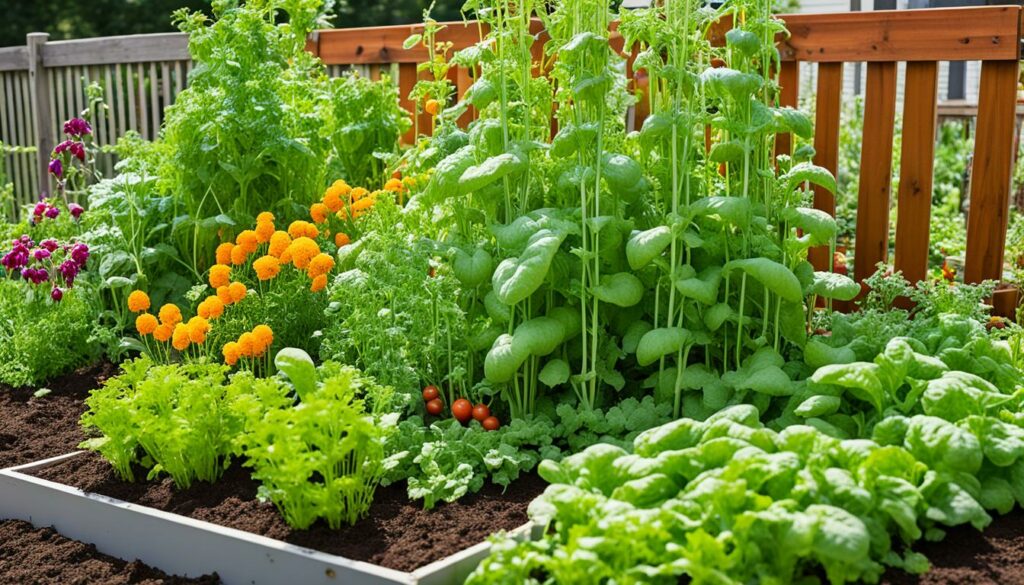
The ‘Three Sisters’ constitutes one of the most successful companion planting frameworks, where corn, beans, and squash grow together in harmony. This approach embodies the essence of a sustainable and highly productive polyculture system. The corn provides a natural structure for the beans to climb, while the beans contribute to soil fertility by fixing nitrogen, essential for plant growth. The broad leaves of the squash serve as a living mulch, preventing weeds and conserving moisture in the soil.
“Marigolds not only bring vibrant hues to the garden but act as guardians to vegetables like broccoli by attracting and trapping aphids away.” – Insights from case studies in gardening.
Another compelling example of companion planting herbs within an edible landscape is the partnership between lettuce and sun-loving plants such as tomatoes and eggplants. Here lettuce benefits from the dappled shade provided by the broader leaves of its companions, reducing the stress from intense summer heat and prolonging its tender, crisp qualities.
- Three Sisters (Corn, Beans, Squash)
- Nutritional symbiosis and structural support
- Weed suppression and moisture conservation
- Marigolds and Broccoli
- Pest management through aphid attraction and trapping
- Adds aesthetic appeal and biodiversity to the garden
- Lettuce with Tomatoes or Eggplants
- Intercropping for shade provision and temperature moderation
- Optimizes garden space with vertical and low growth patterns
Designing Your Plant Companion Chart
Embarking on the journey of companion planting begins with a well-thought-out plan that considers the unique plant traits in companion planting. Each species has its individual requirements and benefits, which, when paired correctly, leads to a harmonious and lush garden ecosystem. Let’s explore the framework for crafting a chart that encapsulates the essence of companion planting, from recognizing plant compatibility to incorporating diversity and timing for an optimized garden layout.
Assessing Plant Traits and Needs
Recognizing the specific characteristics and necessities of your plants is the cornerstone of a practical companion planting guide. Garden biodiversity thrives when you match plants like carrots, a light feeder, with leafy greens, which require more nutrients. Deep-rooted veggies will not interfere with those bearing shallow root systems, ensuring that each gets the necessary space and resources to flourish.
Crafting a Diverse Plant Community
Creating a vibrant tapestry in your garden involves integrating companion planting flowers and vegetables to attract beneficial insects and deter pests. The addition of flowers such as marigolds can deter nematodes, while basil’s aroma keeps flies and mosquitoes at bay, shielding nearby plant companions.
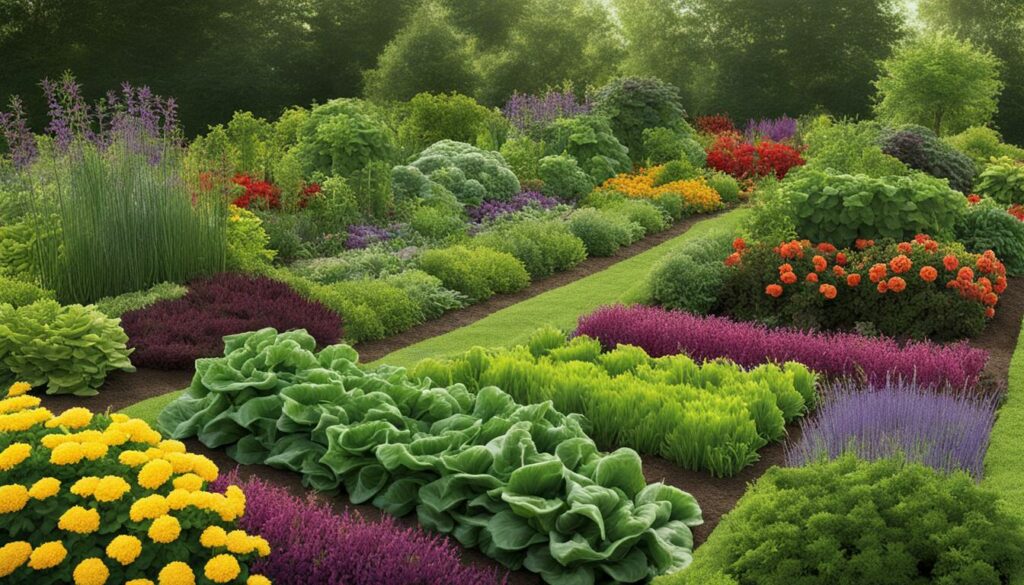
Spacing and Timing Considerations for Companion Plants
Strategic spacing for plant combinations alongside synchronous planting and harvesting schedules is vital to a successful companion planting chart. It’s not just about what plants are side by side; it’s also about when they are planted. Early and late-season crops can share the same plot effectively if their growth periods overlap correctly, maximizing the utility of the available space.
With this comprehensive companion planting guide, let’s take a look at an example companion planting chart that incorporates these principles:
| Plant | Companion | Benefit | Spacing | Timing |
|---|---|---|---|---|
| Tomatoes | Basil | Pest repellent | 12-18 inches apart | Plant basil 2-3 weeks after tomatoes |
| Carrots | Chives | Improves flavor and growth | 3-4 inches apart | Plant chives 2-4 weeks before carrots |
| Lettuce | Strawberries | Ground cover reduces weed growth | 10-12 inches apart | Plant strawberries in early spring; lettuce can be planted every 2 weeks for continuous harvest |
| Beans | Corn | Beans climb corn; corn shades beans | 18-24 inches apart | Plant beans after corn has grown 6 inches |
| Peas | Radishes | Radishes deter pea pests | 1-2 inches apart for radishes; peas in rows 18 inches apart | Plant radishes 3-4 weeks before peas |
By dedicating time to understanding the timing in gardening and spacing guidelines, along with the compatible plant chart, you’ll be equipped to foster a synergistic environment in which each plant supports their neighbor in your verdant garden paradise.
Conclusion
The integrated approach of companion planting serves as a cornerstone for achieving a vibrant and sustainable garden. It is an intricate dance of plant relationships that optimizes nutrient management, harnesses natural pest control, and maximizes space efficiency. A companion planting guide can provide valuable insight for gardeners seeking to pair beneficial plant combinations that leverage the intrinsic strengths and needs of each plant. Through the lens of organic companion planting, growers are empowered to cultivate plant communities that support and enhance one another.
Embracing plant diversity within the garden’s ecosystem not only encourages a balance in nutrient distribution but also fosters an environment less hospitable to pests and more appealing to beneficial pollinators. With the implementation of best plants for companion planting, one can witness the emergence of a self-sustaining microcosm that thrives with minimal human intervention. This leads to garden spaces that are not only productive but also visually stunning and ecologically sound.
At its core, companion planting is equal parts science and art, with a breadth of knowledge underpinning each successful pairing and a touch of gardener’s intuition guiding the process. While empirical research lends credence to certain plant partnerships, much wisdom comes from hands-on practice and observation. Each garden’s unique conditions offer a living laboratory where theory meets practice, yielding lush growth and abundant harvests. As we hone our companion planting strategies, the garden becomes a testament to the harmony that can be achieved when we align our efforts with the elegant complexity of nature.



